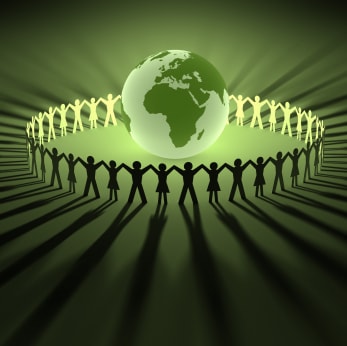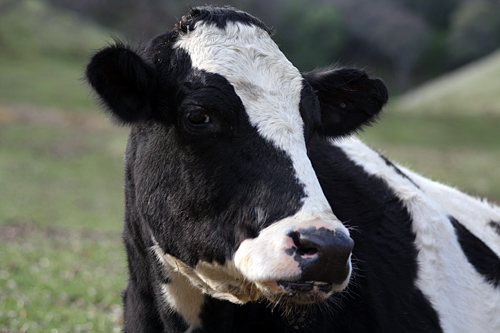 By LESLIE KAUFMAN
By LESLIE KAUFMAN Cupping their hands near holes drilled for cable routing, workers at the Boeing Company’s four-acre data processing site near Seattle noticed this year that air used to keep the computers cool was seeping through floor openings.
Yet Boeing’s goal is not just to save money. The hope is to keep pace with other companies that have joined in a vast global experiment in tracking the carbon dioxide emissions generated by industry.
Boeing and other enterprises are voluntarily doing what some might fiercely resist being forced to do: submitting detailed reports on how much they emit, largely through fossil fuel consumption, to a central clearinghouse.
The information flows to the Carbon Disclosure Project, a small nonprofit organization based in London that sifts through the numbers and generates snapshots by industry sectors in different nations.
By giving enterprises a road map for measuring their emissions and pointing out how they compare with their peers, experts say, the voluntary project is persuading companies to change their energy practices well before many governments step in to regulate emissions.
Scientists estimate that industry and energy providers produce nearly 45 percent of the heat-trapping emissions that contribute to global warming. While some governments are convinced that reining in such pollution is crucial to protecting the atmosphere, a binding global pact is not on the immediate horizon, as negotiations in Copenhagen showed this month.
Until broad regulation is at hand, many investors and company executives say, voluntary reporting programs like the Carbon Disclosure Project may be the best way to leverage market forces for change.
They say the project sends a message that a company that moves to curb emissions now is girded for the future and therefore worthy of investment.
“With the regulatory framework changing, how companies handle carbon is a core risk factor,” said Jack Ehnes, chief executive of Calstrs, the California teachers’ pension fund. “Smart companies will take C.D.P. information and realign their strategies.”
Mary Armstrong, Boeing’s vice president for environment, health and safety, traces her company’s energy focus back to 2007, when she first saw the forms that companies fill out for the disclosure project.
“The questions take you through and say, ‘Do you have environmental performance targets?’ We didn’t, but now we do,” she said. The companies’ individual responses are posted at the project’s Web site.
In contrast to the United States, European Union countries already regulate carbon dioxide emissions from their most energy-intensive industries through a cap and trade program, and Japan polices energy consumption itself.
Paul Dickinson, the founder and chief executive of the Carbon Disclosure Project, is quick to acknowledge that his group is no substitute for muscular government regulation. But he argues that the voluntary project offers a frictionless path toward reining in emissions, even in relatively unregulated markets like China’s and India’s. Emissions are expected to soar in those fast-growing economies in coming years as new coal-fired plants go online.
Yet even as the Carbon Disclosure Project has established itself as the standard for emissions measurement methods, it has stirred some skepticism. Critics say that the emissions figures do not have to be verified through external audits, as financial figures from publicly traded companies must be.
And some argue that the project rewards companies that would have cut their carbon dioxide output anyway, and has no influence over polluting companies that refuse to take part.
Nonetheless, 2,500 of the world’s largest companies completed at least part of the project’s questionnaire last year, from the energy conglomerate Gazprom in Russia to Huaxin Cement in China.
In the United States, where almost only the companies in the Standard & Poor’s 500-stock index were solicited by the disclosure project, some 330 filled out forms this year. Some companies do not answer all of the questions. But the most detailed reports specify not only how much energy a company consumes, and how, but also ticks off ways in which it might be vulnerable to climate change — flooded stores, for example.
Industry is a broad and varied category, of course, covering everything from cement and chemical makers, which emit an enormous amount of carbon dioxide, to data-driven businesses like financial services, which emit little by comparison.
The disclosure project has response rates of at least 60 percent for most industry sectors in the United States. But it has even higher rates for utilities, which are highly regulated, and materials companies, which include cement and chemical makers. It has received responses from energy titans like Chevron and chemical companies like DuPont.
To drum up more and better reporting, the project has enlisted major investors like Calstrs, the nation’s second-largest pension program, and Bank of America Merrill Lynch to co-sign letters from the project encouraging companies to take part.
Mr. Dickinson said the project writes letters on behalf of 475 investor groups representing $55 trillion in funds worldwide.
Some American companies have argued that reporting is cumbersome and could allow competitors to learn too much about their manufacturing processes. But proponents counter that the monitoring could give some of them a competitive advantage as early adopters.
In September, the Environmental Protection Agency announced it could require the nation’s biggest power plants and industrial operations to report greenhouse gas emissions as early as 2011. The United States Chamber of Commerce and the National Association of Manufacturers have firmly opposed such regulation, saying that it would be legally and technically burdensome, drive up fuel costs by promoting renewable sources and send job overseas.
But nations that have already pressed ahead with regulations are prodding the United States to match their efforts. The European Union has been monitoring and limiting carbon dioxide emissions from its most energy-intensive sectors since 2005 through a cap and trade program.
Since 2003 Japan has required companies of any size to report energy consumption to the government and what they are doing to reduce use. Mr. Dickinson argues that disclosure could prove a means of currying investor favor in international markets as the global awareness of industry’s role in climate change deepens.
“I have real confidence that the corporations of the world are going to outperform government in terms of dealing with climate change,” he said. “In fact, they are already.”
His vision for carbon transparency dates back to 1997, when he entered a master’s program on responsible business practices at the University of Bath School of Management taught by Anita Roddick, the founder of The Body Shop.
After graduating, he solicited philanthropists, including Ted Turner, and went about developing reliable ways to measure output. Then he reached out to large investors to co-sign letters demanding that companies fill out the project’s forms. Until 2002, the forms spoke only of “the perception” of climate change because global warming was still “too controversial,” he said.
Some analysts now laud the program as an innovative way of encouraging investors to factor industry emissions into assessments of corporate performance.
Abyd Karmali, global head of carbon markets for Bank of America, likens the disclosure project to the advent of general accounting principles, which enable investors to compare financial performance and move dollars accordingly.
“It is very difficult to translate carbon-related risk into standardized disclosure, so it is a fantastic contribution,” he said.
But others have their doubts. “There is disclosure, and then so what?” said Hewson Baltzell, the co-founder of Innovest, a financial research firm that gathered figures for the disclosure project the first several years. “They’ve dipped their toe in the water on asking companies about performance, but not very far.”
Mr. Dickinson counters that the project has added evaluations that rate companies by concrete steps taken to cut their emissions. It now also asks companies to calculate emissions of their suppliers, in the hope of leveraging the power that a giant like Wal-Mart might have over those that are otherwise unwilling to report.
Rob Bernard, chief environmental strategist for Microsoft, which is helping the project make its data more accessible to the public, says the impact of the reports is growing.
“With each year we are able to compare performance on greenhouse gas information with new levels of granularity,” he said. “Now we just have to hope that more people read it and care.”





















